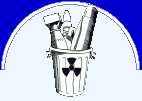April 10, 2007
In the buildup to Desert Storm, many bumper stickers in the U.S. proclaimed, "Nuke ’Em Till They Glow." In reality, there was some truth in the statement because the U.S. left hundreds of tons of spent uranium in Iraq. This material is very hard and was used in missiles, rockets and bombs. The leftover residue has contaminated much of Iraq and incidences of malformed babies skyrocketed after the conflict.
The U.S. again pummeled Iraq with spent uranium in its 2003 invasion of Iraq. But, did the U.S. actually detonate a nuclear weapon during the conflict? Former U.S. Army Captain Eric May came to this conclusion after closely studying the Battle of Baghdad at the international airport. In an interview published on August 25, 2006, he told me:
A couple of journalists who were in Baghdad proper talked to the people returning from the battle. The most extreme thing I picked up is that the Battle of Baghdad was started at the airport with the U.S. forces being overwhelmed. It would end up being a six-hour firefight at close quarters and my surmise is that our side was running out of ammo and somebody decided to go nuclear. That seems to be universally acknowledged by everybody on all sides, except the American.
Evidently, what happened was the U.S. G.I.s buttoned up inside their armor, which cuts down the transmission of radiation, and some sort of nuclear devices were used at Baghdad Airport. Since then, American battle doctrine has been revised to allow commanders to do exactly the kind of things that I’m inferring from my sources that were done at Baghdad Airport. In other words, they retroactively retrofitted the doctrine.
The nuclear threshold is a very fuzzy thing in this war anyway. We already went over using D.U. (depleted uranium). That already, arguably, makes it a nuclear war. Of course, you see why Battle of Baghdad One had to be covered up. How the hell do you go into a war where you say you’re going to remove an evil madman because he has weapons of mass destruction and you bring them with you?
Recently, another source made the same allegations. Saifeddin Hassan Taha al-Rawi, the former commander of Iraq’s Republican Guard, was interviewed by Al-Jazeera News about the battle. Al-Rawi is still on the run from the U.S. He is on the infamous set of playing cards the U.S. devised in 2003 as the Jack of clubs. There is a one million dollar price tag on him.
According to an Al-Jazeera article of April 9, 2007, called "U.S. Accused of Using Neutron Bombs:"
Al-Rawi told Al Jazeera that U.S. forces used neutron and phosphorus bombs during their assault on Baghdad airport before the April 9 capture of the Iraqi capital.
Al-Rawi is one of the most wanted associates of Saddam Hussein, the deposed Iraqi leader, still on the run.
"The enemy used neutron and phosphorus weapons against Baghdad airport. There were bodies burnt to their bones," he said. "The bombs annihilated soldiers but left the buildings and infrastructure at the airport intact," he added.
A neutron bomb is a thermonuclear weapon that produces minimum blast and heat, but unleashes huge amounts of lethal radiation that can penetrate armor. It is especially destructive to human tissue.
According to Al-Rawi, about 2,000 Republican Guard troops "fought until they were martyred."
The neutron bomb has been an on-again, off-again project for the U.S. military. Testing began during the Kennedy administration and was halted during the Carter administration. But, Ronald Reagan restarted the program. At one time, it was considered to be a humane weapon because it could kill people without destroying buildings. This logic is baffling because it considers property to be more valuable than human lives. One problem the U.S. always had in its projections of a nuclear war was that there would be nothing left for the U.S. to occupy after attacking a nation with nuclear weapons. The neutron bomb was the answer. It could kill a population, but leave the infrastructure intact.
Shortly after the Battle for Baghdad at the airport, U.S. military personnel moved much of the ground on which the battle was fought and replaced it with fresh dirt. At the time, these activities were questioned, but soon forgotten.
Many Iraqis who lived in the environs of the airport also died in a mysterious manner. Various indicators point to the fact that the U.S. did use a neutron bomb against the Republican Guard. As Captain May stated, they were outnumbered by the Iraqis and the only solution was to use such a hi-tech weapon.
On a sad note, Captain May recently informed me that he is suffering from amyotrophic lateral sclerosis (ACL), commonly known as Lou Gehrig’s disease. The malady affects nerve cells in the brain and in the spinal cord and usually is fatal. However, new techniques have arisen that help patients live a productive life with the disease, yet there still is no cure. I wish Captain May a possible stabilization so he can continue to inform the public of the reality of the Battle of Baghdad, a bloody and violent battle that claimed many lives. He is a man of courage and integrity.
Source: uruknet.info
ACDN comments:
Various objections can be made to the assertions of Al-Rawi.
First there’s this man himself, his former responsibilities, the interest he has in glorifying the heroism of the Republican Guard which he led (it’s surprising that he survived) and in exaggerating the weaponry used against him.
Then there’s the "uruknet" website, which reports what he said to Al Jazeera, gives information about "occupied Iraq" and therefore supports in the Iraqi resistance; it seems more or less inspired by partisans of Saddam Hussein. An accusation that smears the US army can thus be explained away as a piece of propaganda.
Finally, it is hard to believe that the Americans would use neutron weapons - even small ones - in close combat. Their own troops too would risk suffering the ill-effects.
However, despite all that, one cannot exclude a priori the possibility that Saddam’s former associate has told the truth.
There is a reply to that final objection, it’s in the original article: according to Malcolm Lagauche, the GIs were wearing suits that protected them against radioactivity, anti-NBC suits. Furthermore, he speaks not of several bombs but of one at least, apparently only one:
"Various indicators point to the fact that the U.S. did use a neutron bomb against the Republican Guard. As Captain May stated, they were outnumbered by the Iraqis and the only solution was to use such a hi-tech weapon."
The words of "former US army captain Eric May" spoken to Malcolm Lagauche himself, were spoken earlier that those of Al-Rawi. Al-Rawi merely confirms what May said, and not the converse. One fact, an apparently confirmed fact, makes the story particularly plausible: shortly after the battle of Baghdad, the US Army scraped up the soil from the international airport in the area where the battle had been fought and replaced it with fresh earth.
We note that they did the same thing South Baghdad at the Forward Base Falcon, after the explosions of 10 October 2006. The satellite photos of the "cleaned" camp, which could be seen on Google Earth on 19 December 2006, testify to this.
To this day, the only certainty about weapons used in Iraq is that the US and allies used Depleted Uranium Weapons, without any doubt and in large numbers. Although these use conventional explosives, their penetrating tips of so-called depleted uranium (DU) create on impact (or on they deterioration) radioactive nanoparticles which are very harmful - their catastrophic effects on civilian populations as on combatants have been proven long ago.
As for "nuclear weapons" in the usual sense, i.e. fission or fusion bombs, it has not been proven that any have been exploded in Iraq, either deliberately in 2003 at Baghdad Airport (as claimed by the two witnessed quoted above) or at other times for other reasons. But the contrary has not been proven either.
It is possible that the Iraq War is a nuclear war for reasons other than the two mentioned here (DU, neutron bomb)... because of "mini-nukes" which could have exploded on 10 October 2006 during the attack on Forward Base Falcon and the fire that ensued. It’s a disaster not spoken of in the West, and nobody is trying to find out its size or its effects.
What is needed is a rigorous and objective inquiry, including opposing views, so that all these possibilities can be resolved. That would show whether, as Malcom Lagauche claims, "Many Iraqis who lived in the environs of the airport also died in a mysterious manner" - and whether that has occurred also around Camp Falcon since October 2006. Measurements of residual radioactivity could perhaps confirm or disprove these hypotheses.
If the allegations were mere gossip, propaganda, optical illusions or anti-American prejudices, the USA would have every interest in authorising such an inquiry. The responsible authorities of the "international community" would need to expedite it too. This would be a matter for the head of the UN and its agencies the IAEA and the WHO.
On 27 December 2006, ACDN wrote to the UN Secretary-General and the IAEA Director.






 14 February 2024 : In memory of Robert Badinter, abolishing the collective death penalty by nuclear weapons
14 February 2024 : In memory of Robert Badinter, abolishing the collective death penalty by nuclear weapons
 26 December 2023 : Israeli, Palestinian women sister orgs. nominated for Nobel Peace Prize
26 December 2023 : Israeli, Palestinian women sister orgs. nominated for Nobel Peace Prize
 17 December 2023 : David Krieger, Co-Founder and President Emeritus, Has Passed Away
17 December 2023 : David Krieger, Co-Founder and President Emeritus, Has Passed Away
 24 January 2022 : Dominique Lalanne Has Died
24 January 2022 : Dominique Lalanne Has Died
 19 December 2021 : Taiwan rejects a nuclear power plant by a referendum
19 December 2021 : Taiwan rejects a nuclear power plant by a referendum
 25 September 2021 : The Death of Paul Quilès, former Minister of Defense, who later worked to abolish nuclear weapons
25 September 2021 : The Death of Paul Quilès, former Minister of Defense, who later worked to abolish nuclear weapons
 8 November 2020 : Now is the time for a peaceful world without nuclear weapons
8 November 2020 : Now is the time for a peaceful world without nuclear weapons
 18 July 2020 : Azerbaijan Threatens Chernobyl-Style ‘Catastrophe’ In Caucasus Drone War
18 July 2020 : Azerbaijan Threatens Chernobyl-Style ‘Catastrophe’ In Caucasus Drone War
 28 August 2019 : Hiroshima Urgent Appeal: Keep the international nuclear arms control, disarmament, and non-proliferation pacts alive
28 August 2019 : Hiroshima Urgent Appeal: Keep the international nuclear arms control, disarmament, and non-proliferation pacts alive
 16 August 2019 : After Russian Explosion, Global Zero Warns Against New Nuclear Arms Race
16 August 2019 : After Russian Explosion, Global Zero Warns Against New Nuclear Arms Race